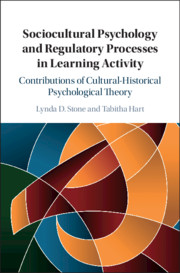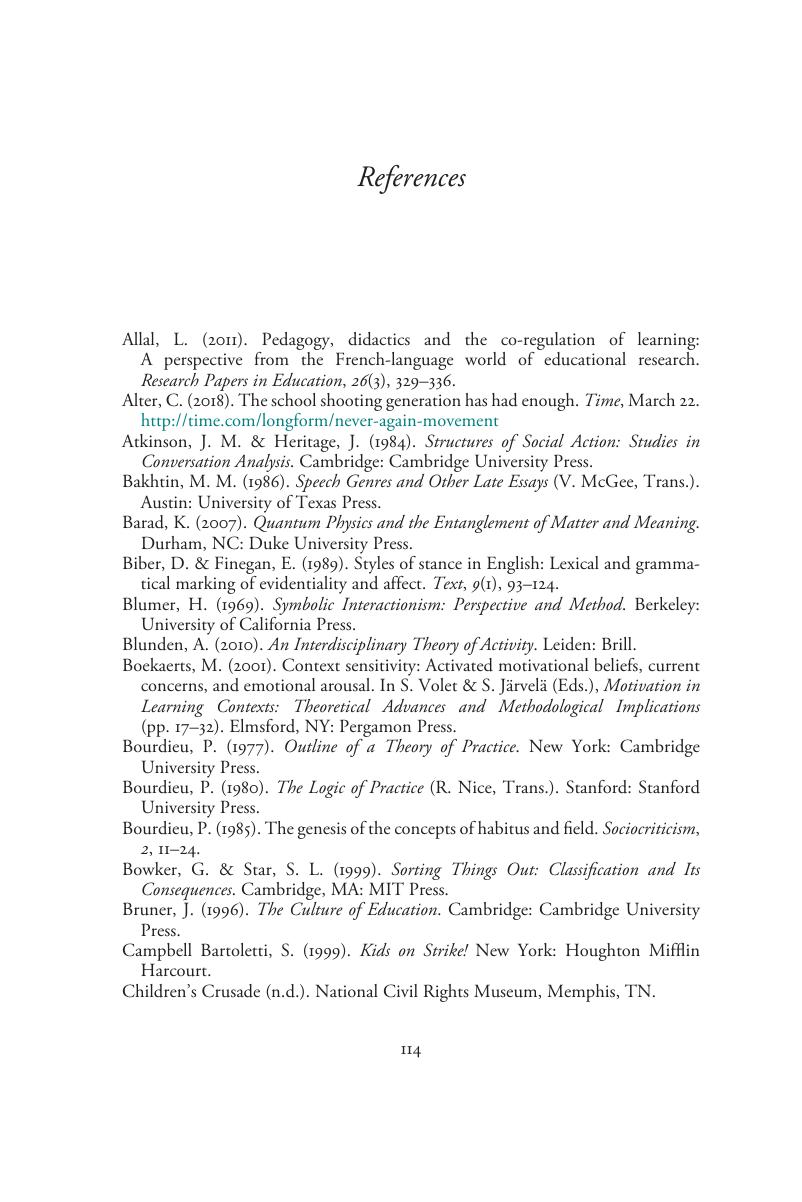 Sociocultural Psychology and Regulatory Processes in Learning Activity
Sociocultural Psychology and Regulatory Processes in Learning Activity Book contents
- Sociocultural Psychology and Regulatory Processes in Learning Activity
- Sociocultural Psychology and Regulatory Processes in Learning Activity
- Copyright page
- Dedication
- Contents
- Figures
- Transcription Excerpts
- Foreword
- Acknowledgments
- Transcription Conventions
- Introduction
- Chapter 1 Cultural-Historical Psychological Theory
- Chapter 2 The Relational Habitus and Regulatory Processes
- Chapter 3 Practical-Moral Knowledge and Regulatory Processes
- Chapter 4 Identity and Competence Woven Together Through Regulatory Processes
- Chapter 5 Contextual Mood and Regulatory Processes
- Conclusion
- References
- Index
- References
References
Published online by Cambridge University Press: 30 September 2019
- Sociocultural Psychology and Regulatory Processes in Learning Activity
- Sociocultural Psychology and Regulatory Processes in Learning Activity
- Copyright page
- Dedication
- Contents
- Figures
- Transcription Excerpts
- Foreword
- Acknowledgments
- Transcription Conventions
- Introduction
- Chapter 1 Cultural-Historical Psychological Theory
- Chapter 2 The Relational Habitus and Regulatory Processes
- Chapter 3 Practical-Moral Knowledge and Regulatory Processes
- Chapter 4 Identity and Competence Woven Together Through Regulatory Processes
- Chapter 5 Contextual Mood and Regulatory Processes
- Conclusion
- References
- Index
- References
Summary

- Type
- Chapter
- Information
- Sociocultural Psychology and Regulatory Processes in Learning ActivityContributions of Cultural-Historical Psychological Theory, pp. 114 - 122Publisher: Cambridge University PressPrint publication year: 2019


